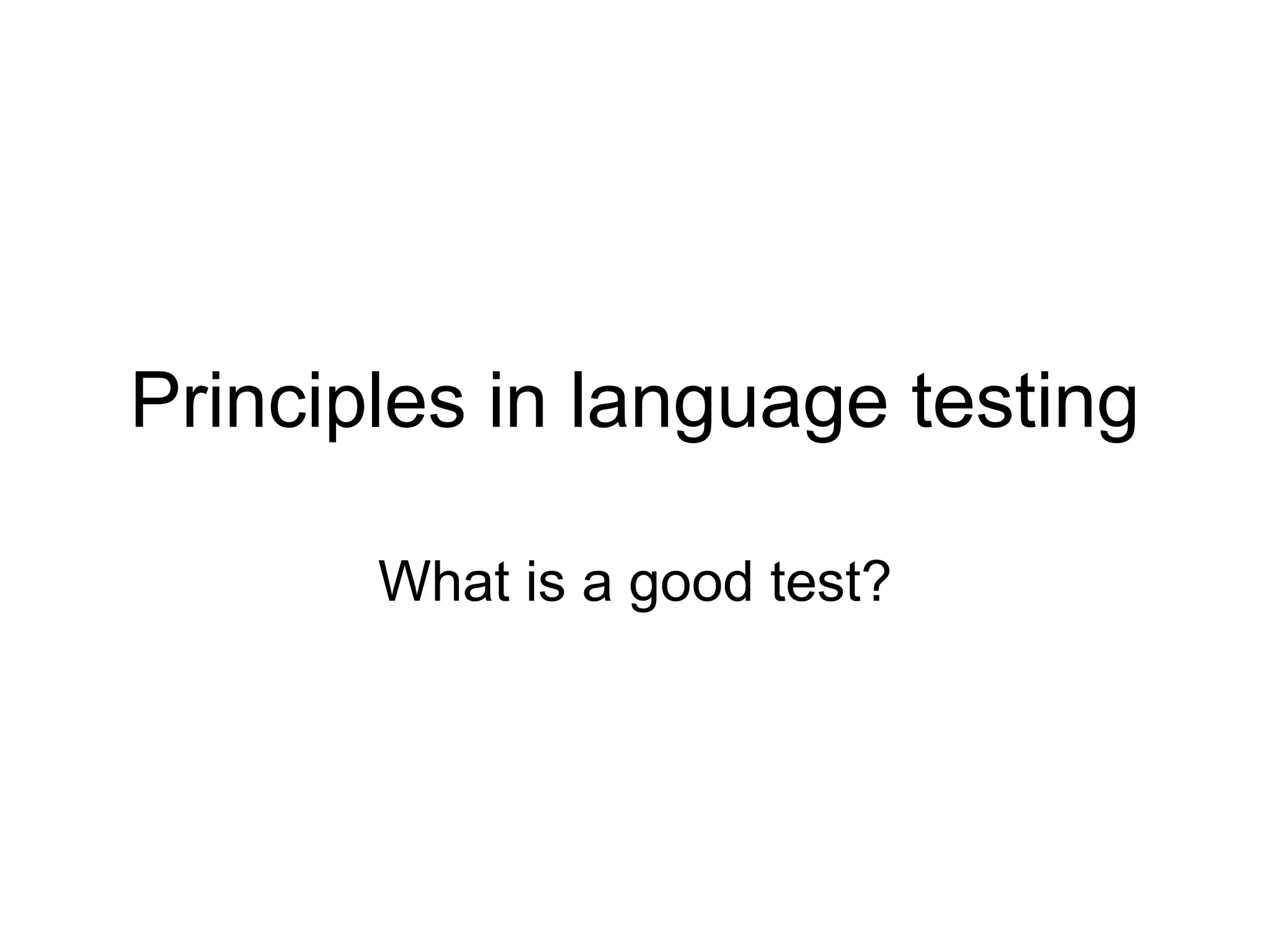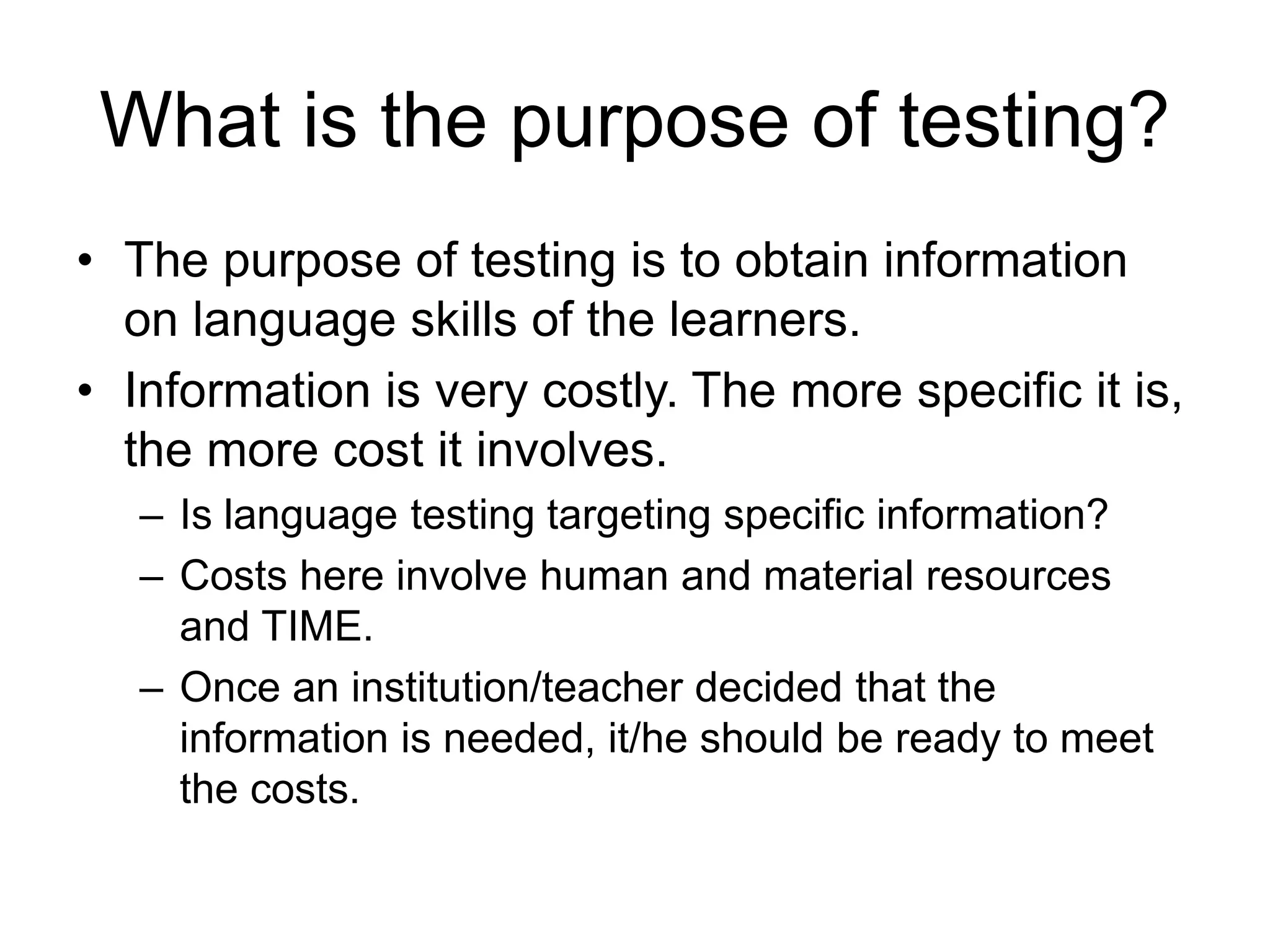This document discusses key principles of language testing, including test validity, reliability, practicality, and washback effect. It defines validity as whether a test measures what it intends to measure, and lists various types of validity including construct, content, predictive, and concurrent validity. Reliability refers to consistency and accuracy of test scores. Practicality considers resources needed like time and costs. Washback refers to a test's impact on teaching and learning, and how to achieve positive washback.

















